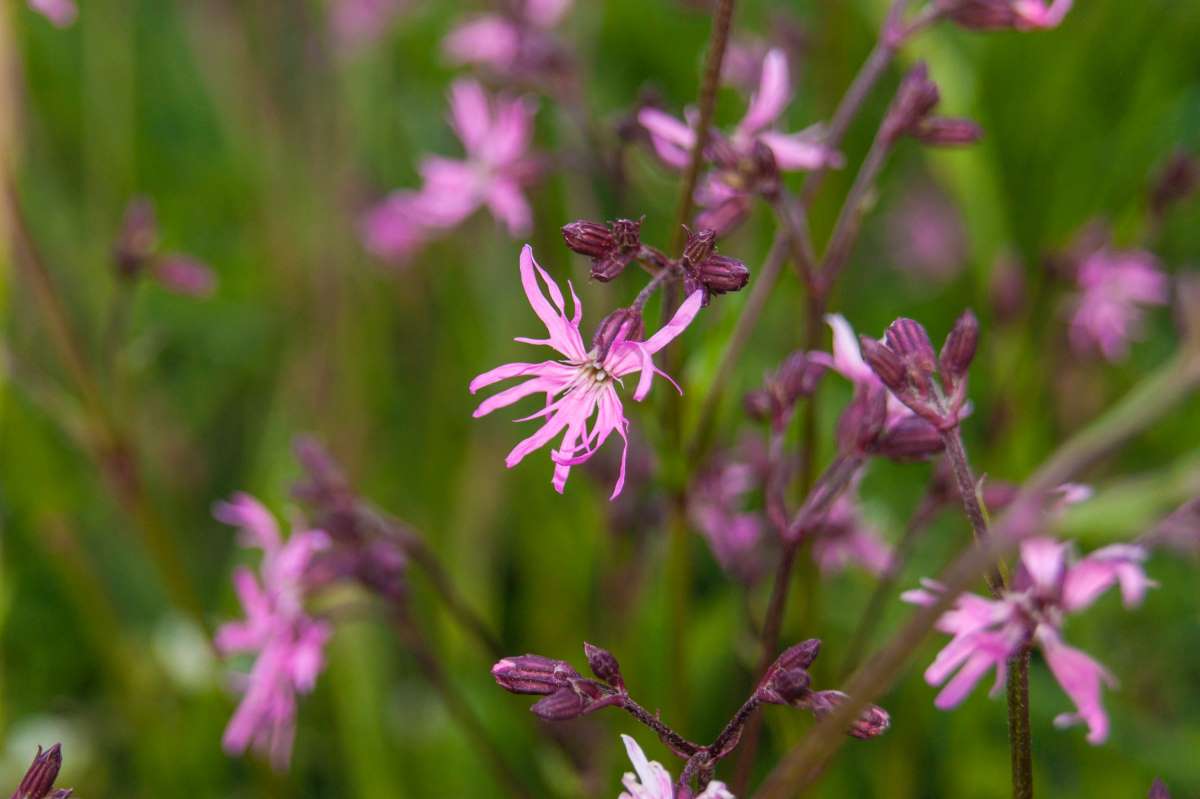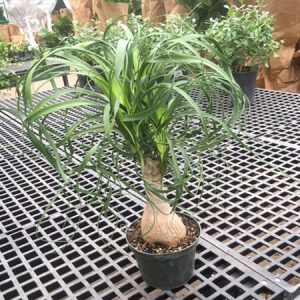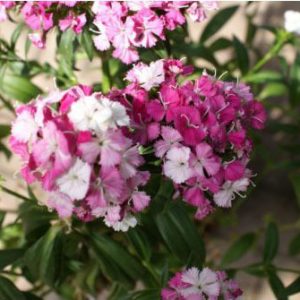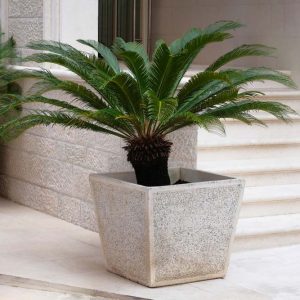Description
Lychnis – Viscaria – Campion – Catchfly –
There are about 20 species of biennials and perennials in this genus. They occur in sites ranging from damp meadows and woodland to alpine habitats, in Northern Temperate and arctic regions. They have erect, usually branched stems, and simple, often hairy leaves held in opposite pairs. The flat, 5 petalled, salverform to tubular or star shaped flowers occur in scarlet, purple, pink, or white, and are either solitary or held in terminal cymes or occasionally panicles. The petals are notched or deeply forked. Grow the larger perennials in a sunny border or wild garden, the smaller, alpine species in a rock garden, the biennials in an annual or herbaceous border.
Grow in any moderately fertile, well drained soil in full sun or partial shade. Deadhead frequently to prolong flowering. Divide in early spring.
Prone to anther smut and leaf spots.
L. flos-cuculi – Ragged Robin – This slender, upright or spreading, sparsely hairy perennial from damp places in Europe , the Caucasus and Russia grows 30″ tall and 32″ wide. It produces inversely lance shaped, mid to bluish green basal leaves, to 5″ long, and smaller, oblong-lance-shaped, stem clasping leaves. In late spring and early summer it bears loose, few flowered, branched, terminal, cymes of star shaped, pale to bright purplish pink, sometimes white flowers, to 1 ½” across, with petals deeply cut into 4 linear segments. Suitable for a wild garden.
Zones 3-7





